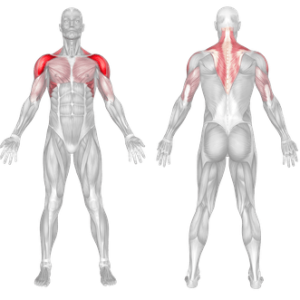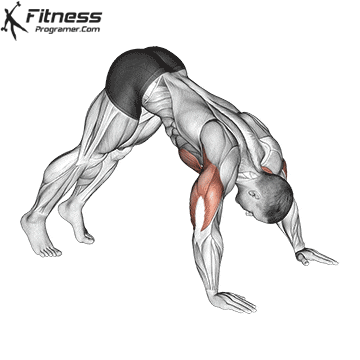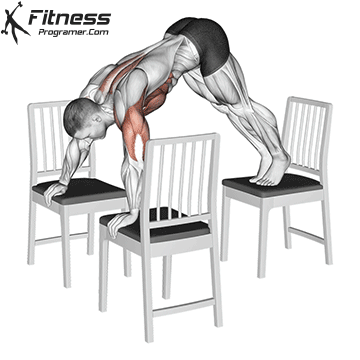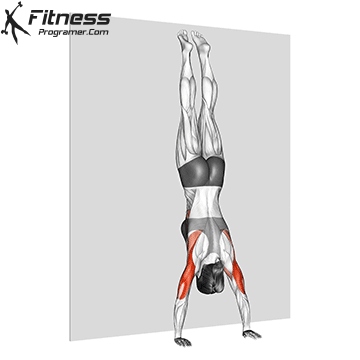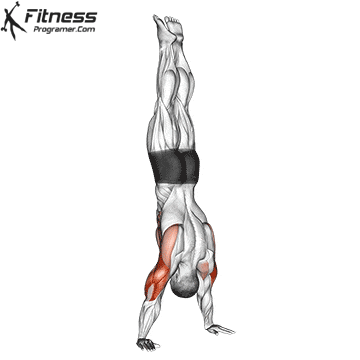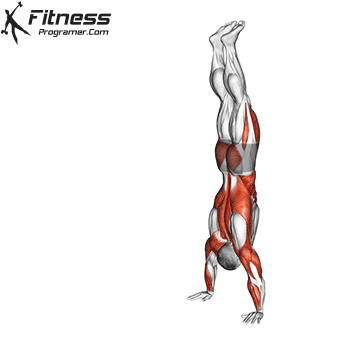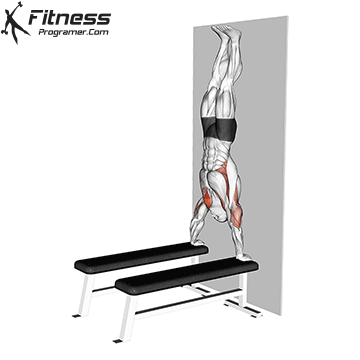Bench Pike Push-up Overview
The bench pike push-up is a variation of the traditional pike push-up where the feet are elevated on a bench, box, or platform. This exercise increases the difficulty by shifting more body weight onto the shoulders and triceps, making it an excellent progression toward handstand push-ups.
It is commonly used in calisthenics, CrossFit, and gymnastics training to build overhead pushing strength, balance, and control.
How to Perform a Bench Pike Push-up
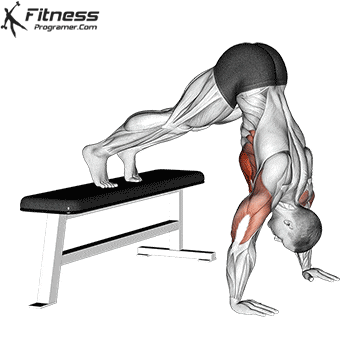
Step 1: Set Up in the Starting Position
- Place a sturdy bench, box, or platform in front of you.
- Position your feet on the bench with your hands on the floor, slightly wider than shoulder-width apart.
- Bend your body according to the height of the coffee table and keep your hips up.
- Look slightly forward to maintain a neutral neck position.
Step 2: Lower Your Body
- Bend your elbows and lower your head toward the floor in a controlled motion.
- Keep your core engaged and avoid arching your lower back.
- Aim for a 90-degree angle at the elbows as your head nears the floor.
Step 3: Press Back Up
- Push through your palms to straighten your arms and return to the starting position.
- Keep your shoulders engaged and control the movement throughout.
- Repeat for the desired number of repetitions.
Repetitions and Sets
- Beginners: Three sets of five to eight reps
- Intermediate: Three to four sets of eight to twelve reps
- Advanced: Four sets of fifteen reps or more
Tips for Proper Form
- Keep Your Hips Elevated – Keep your hips elevated and your upper body in a straight line to effectively target your shoulders during the exercise.
- Move Slowly and with Control – Do not rush the movement to avoid injury.
- Engage Your Core – Keep your abs tight to stabilize the body.
- Position Your Hands Correctly – Hands should be slightly wider than shoulder-width.
- Breathe Properly – Inhale while lowering, exhale while pressing back up.
Common Mistakes to Avoid
- Letting the Hips Drop – Reduces shoulder activation and turns it into a regular push-up.
- Not Lowering Deep Enough – Limits effectiveness; aim for a 90-degree elbow bend.
- Rushing the Movement – Can lead to poor form and decreased muscle engagement.
- Placing Hands Too Wide – Can reduce shoulder engagement and cause strain.
- Arching the Lower Back – Indicates poor core engagement and can lead to injury.
Benefits of Bench Pike Push-ups
1. Builds Shoulder Strength
By elevating the feet, more weight is shifted onto the shoulders, making it a great alternative to overhead pressing exercises.
2. Strengthens the Upper Chest and Triceps
The movement pattern closely mimics an overhead press, engaging the upper chest, triceps, and shoulders.
3. Improves Core Stability
Keeping the hips elevated and maintaining balance engages the abdominals, obliques, and lower back.
4. Enhances Balance and Coordination
The bench pike push-up improves body control, making it a useful exercise for gymnastics, handstands, and calisthenics training.
5. Prepares for Handstand Push-ups
Since it mimics the mechanics of a handstand push-up, it is an effective progression for athletes working toward inverted strength movements.
6. Increases Shoulder Mobility
This exercise requires a full range of motion in the shoulders, promoting better flexibility and injury prevention.
Muscles Worked
